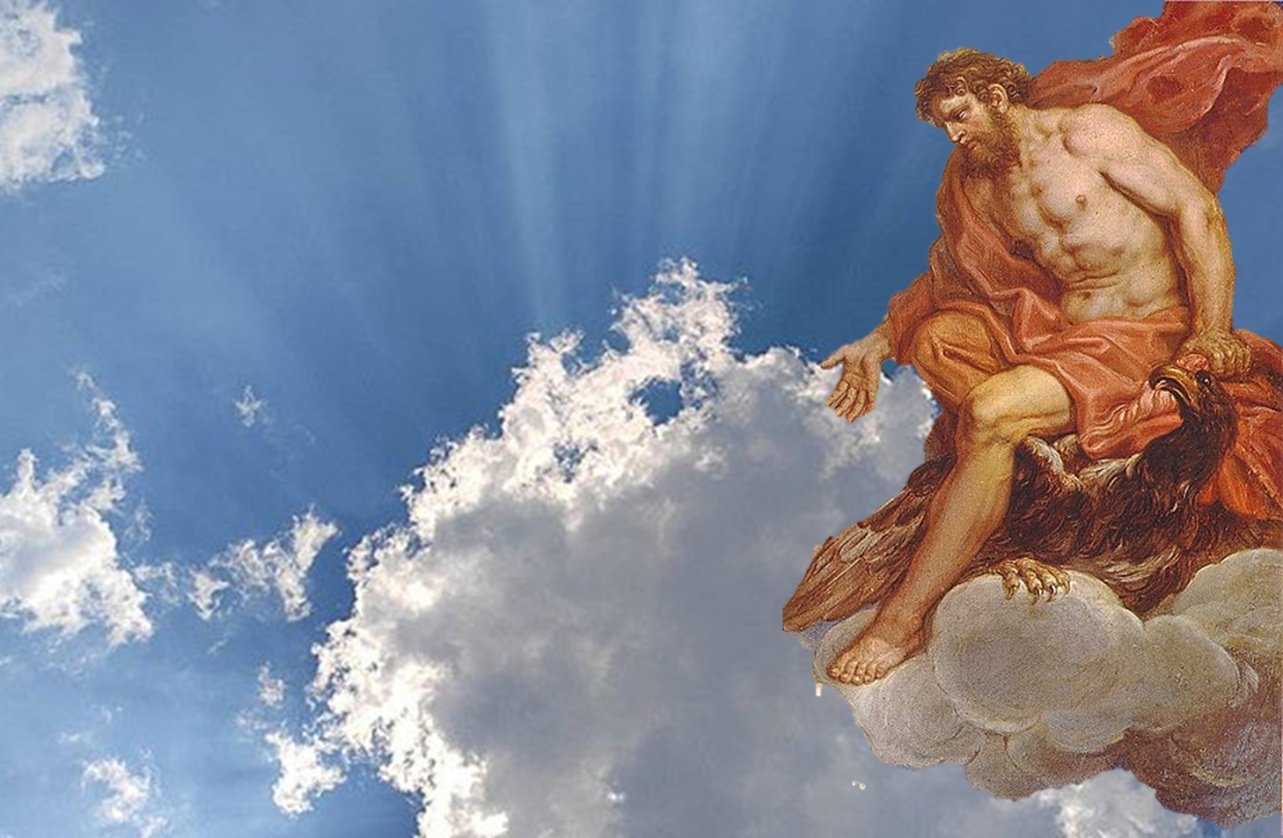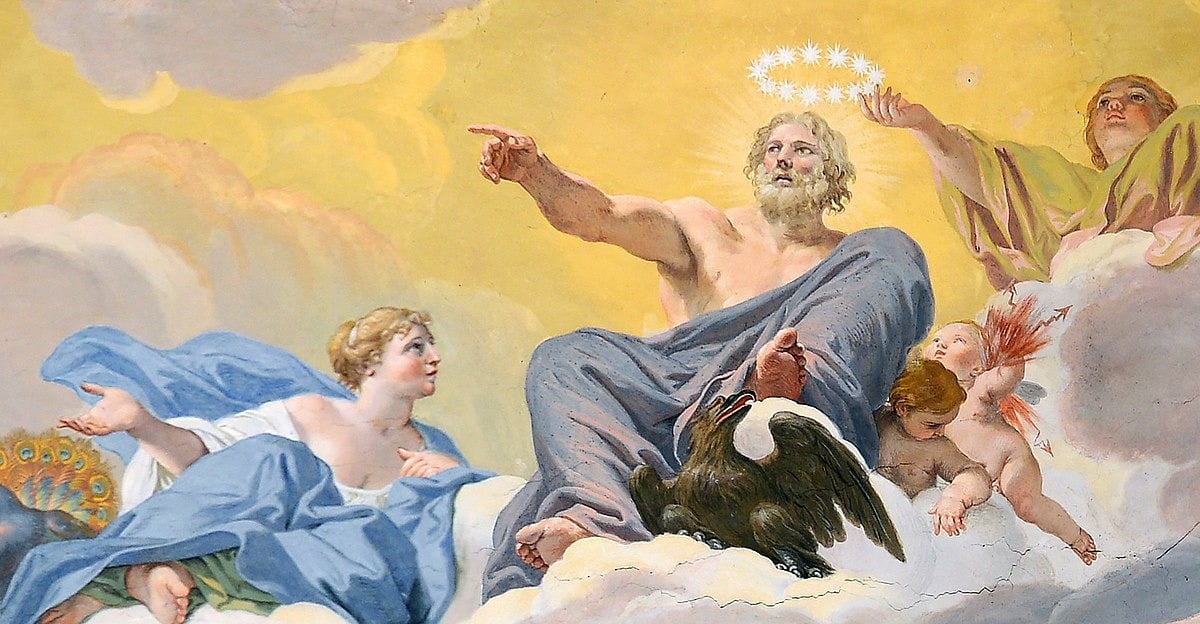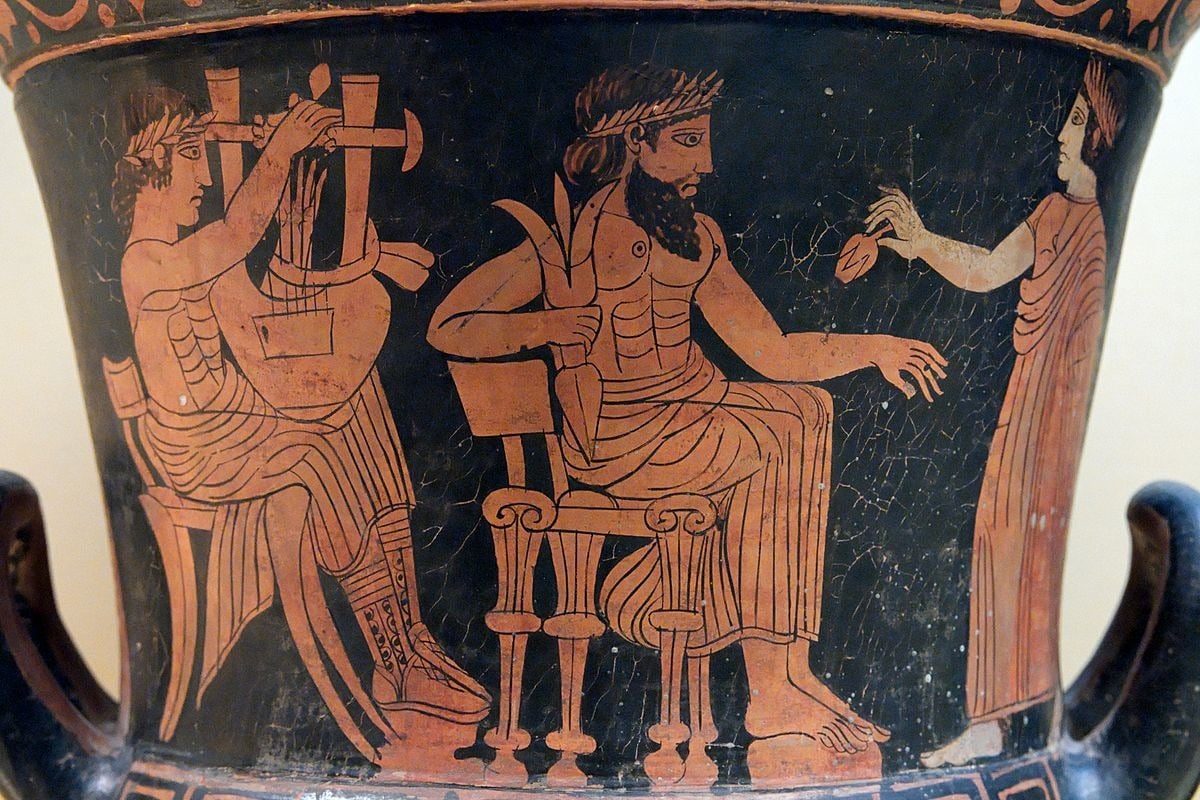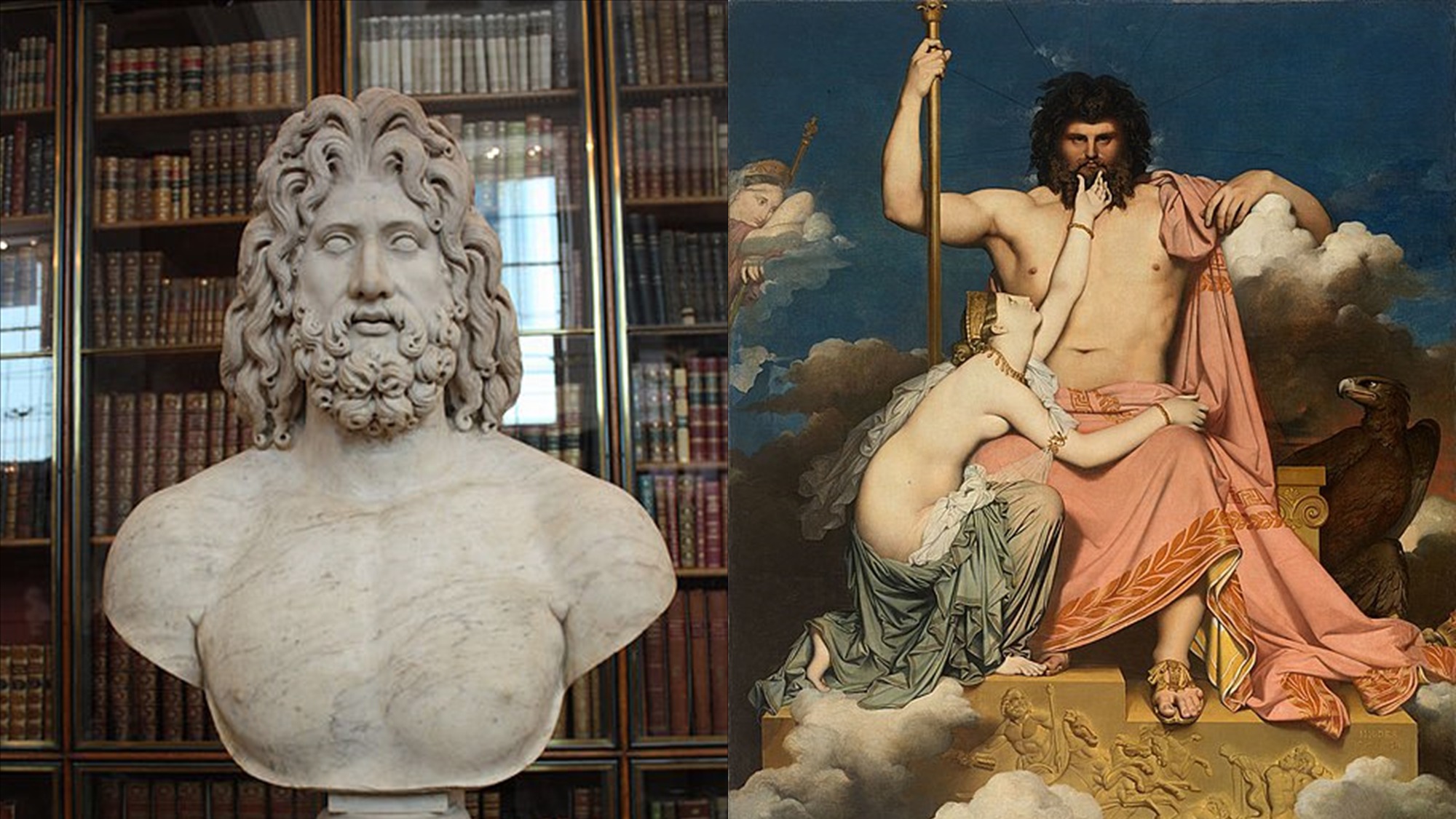
The “sky father” is an archetypal god that appears in many ancient religions across the world, including within the ancient Greek and Roman pantheons as Zeus and Jupiter. The sky father was often the chief god of his respective pantheon.
Owing to the sky father’s prevalence in several mythologies historians and linguists theorize that deities such as Zeus, Jupiter, and Dyauspitar may be linked to the older religious beliefs of the Proto-Indo-European peoples.
The chief deity of the Proto-Indo-Europeans was “Dyḗus ph₂tḗr” (also spelled as “Dyeus Phter”), a celestial sky god who shares features with deities worshipped in several later religions. The Proto-Indo-Europeans were a pre-literate people who left no written records, so Dyeus Phter is a reconstructed word referring to the sky father they likely worshipped.

The Proto-Indo-Europeans
The Proto-Indo-Europeans were a theoretical community of speakers who used the reconstructed Proto-Indo-European language. They are believed to have lived during the late Neolithic period, approximately within the 4th millennium BC. Conventional scholarly understanding positions their presence within the Pontic–Caspian steppe region in Eurasia, encompassing present-day Ukraine and southern Russia. However, certain archaeologists propose broader timelines for the Proto-Indo-European period, extending it to the middle Neolithic (5500 to 4500 BC) or even the early Neolithic (7500 to 5500 BC), accompanied by alternative suggestions regarding their geographical location.
As the second millennium BC emerged, the descendants of the Proto-Indo-Europeans had undergone widespread dispersion across Eurasia, leaving their mark in diverse territories. This influence manifested in regions like Anatolia, where the Hittites stood as exemplars; the Aegean area, home to ancestors whose language eventually evolved into that of Mycenaean Greece; the northern expanses of Europe, intertwined with the Corded Ware culture; the peripheries of Central Asia, characterized by the Yamnaya culture; and the vast southern expanse of Siberia, where traces of their presence were mirrored by the Afanasievo culture.
Proto-Indo-European mythology is difficult to uncover because explicit records of these mythological narratives are absent. Proto-Indo-European speakers existed within preliterate social frameworks; thus, scholars specializing in comparative mythology have pieced together specifics through shared resemblances present among later Indo-European languages. This process operates under the presumption that fragments of the original belief systems of the Proto-Indo-Europeans endured within subsequent cultural traditions.

Dyeus Phter’s link to Zeus and other sky father gods
“Dyḗus ph₂tḗr” (also spelled as “Dyeus Phter”) is a reconstructed phrase from the ancient Indo-European language. It is the reconstructed name for the hypothesized chief deity of the Proto-Indo-European pantheon, representing the sky or the celestial father figure. The phrase is reconstructed based on comparative linguistic analysis and has cognates in various Indo-European languages.
The first part, “Dyḗus,” represents the sky or the heavens and is the root of words related to “day” in many Indo-European languages. The second part, “ph₂tḗr,” represents “father” and is the root of words related to “father” in various Indo-European languages as well.
Dyḗus ph₂tḗr interests scholars who explore mythology and languages due to its potential ties to later gods in various Indo-European cultures. While direct historical links between “Dyḗus ph₂tḗr” and specific gods like Zeus or Jupiter aren’t evident, linguistic and conceptual similarities suggest the evolution of religious ideas across cultures.

For example, in Greek mythology, Zeus takes the helm as the chief god overseeing the skies. He mirrors the Proto-Indo-European “Dyḗus ph₂tḗr” in his role as a sky deity and paternal figure. The name “Zeus” even traces back to “Dyḗus” through a common term for “god.”
In Roman legends, Jupiter claims the title of the primary god associated with the sky. “Jupiter” stems from the Latin “Iuppiter,” linked linguistically to “Dyḗus ph₂tḗr.” This connection underscores the persistence of certain religious concepts from the ancient Indo-European period in the realm of Roman deities.
Parallel sky-oriented gods emerged in other Indo-European cultures as well. In ancient India, the Vedic deity Dyauspitar shares kinship with the original sky father notion. The Baltic deity Dievas aligns with the sky, while Slavic beliefs introduce Dyed/Dazhbog, showcasing linguistic and thematic resemblances to the original concept.
These linguistic and conceptual bonds suggest that the notion of a sky father god was rooted and adapted across diverse Indo-European cultures, influencing the emergence of gods like Zeus and Jupiter. Despite variations in stories and traits, the core idea of a potent sky god endures throughout cultures and epochs, even arguably in the later monotheistic Abrahamic religions.
See all the latest news from Greece and the world at Greekreporter.com. Contact our newsroom to report an update or send your story, photos and videos. Follow GR on Google News and subscribe here to our daily email!



